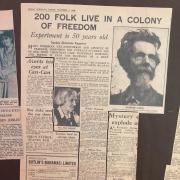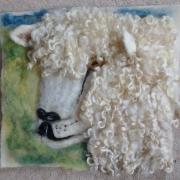Farming life in the Cotswolds with the Countryfile presenter
Welcome to autumn, the cider season and a busy time in the pocket orchards of England. It’s certainly the case in Somerset, Gloucestershire and Herefordshire, the ‘Cider Counties’, with more farmhouse cider makers turning out barrels, bottles and pint pots of the fruity golden thirst-quencher than anywhere else in the land. But what’s often overlooked is the long history of cider-making in Kent and East Anglia, where eating and cooking apples were used instead of West Country cider varieties, giving the final product a lighter, cleaner taste and colour.
Bread and cheese and cider,
Make your belly wider.
The farmhouse apple scratters and antique cider-presses are put to good use in September and October; the scratter crushes the apples to a pulp before the mashed flesh is wrapped in cloth (called a ‘hair’) to create a rectangular packet which is stacked with others (known as a ‘cheese’) and squeezed in the press until the precious liquid pours out. After a few days in the press and several months fermenting in barrels, the cider will be ready to drink the following year. Cider made this way is always measured in gallons. That’s because when you hear cider-makers talk about their greatest passion, you realise that the language of the cider barns is as lovely as the drink itself – pints, quarts and gallons; firkins, puncheons and hogsheads. It’s almost poetry.

There are modern ciders to suit every palate and pocket but unless you’re a connoisseur, it’s a struggle to make sense of the different drinks which all have the word ‘cider’ on the label. There are big brands, craft, heritage, farmhouse and scrumpy. What’s the difference? Let’s start with the well-known popular brands, or ‘industry’ cider. Sold in bottles and hand-pulled in pubs, they’re commercially produced in huge quantities and millions of pounds are spent advertising them on TV. The marketing includes flavoured or fruit varieties and ‘cider over ice’. Next there’s craft cider, a relatively new name for something that’s been going on for hundreds of years; professionally made cider produced in small batches using tradition methods with the focus firmly on taste. You will also hear it called artisan, authentic or real cider. Heritage cider is similar but makes more of using traditional apple varieties such as the bitter-sharp Kingston Black or the bittersweet Yarlington Mill.
READ MORE: Wishing Gloucestershire farmer Eric Freeman a very happy 90th.

Farmhouse cider has its roots in the medieval monasteries, where orchard-keeping and cider-making were practiced by monks who had travelled to Britain from Northern France. It didn’t take long for the new trend to spread and soon farmsteads and local manors were producing their own cider, for pleasure, for profit and as payment. Famously some labourers and estate workers were partly paid in cider, and men working in the fields at harvest time were given cider to drink as they sought shade under trees and hedgerows in the heat of the midday sun.
Scrumpy is an over-used word these days but originally it described a certain type of old-fashioned drink; a very rustic and unsophisticated farm cider traditionally made from whatever apples and windfalls were to hand. If it was done properly, it was cloudy, still and much more potent than anything you could buy in a pub or off licence. Real scrumpy is still made in barns, sheds and outhouses all over the West Country and probably always will. So if you love a refreshing bottle of cider on a warm balmy evening, bear in mind the hard work that went in to making it months earlier.
Follow Adam on Twitter: @AdamHenson
Cotswold Farm Park, 01451 850307; cotswoldfarmpark.co.uk



























